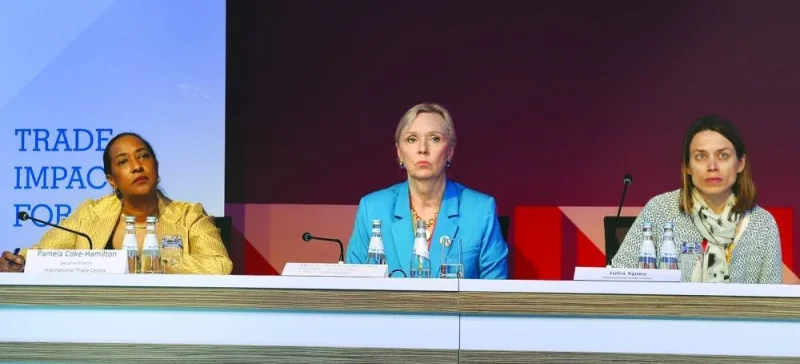International Trade Centre (ITC) launched the LDC Trade Report 2023: Improving Food Security Monday during the Fifth United Nations Conference on the Least Developed Countries (LDC5).
At a press conference, ITC officials said that trade can increase the availability and affordability of food in least developed countries where more than 60% of people deal with food insecurity – twice as much as in developing countries, and six times as much as in developed countries.
In the context of increasing global instabilities, the new report by ITC and UNOHRLLS, the lead United Nations agency supporting least developed countries highlights trade policy options to help them work towards sustainable, trade-led development, in the face of crises.
ITC executive director Pamela Coke-Hamilton explained that least developed countries continue to depend on commodity exports almost twice as much as other developing countries, and they continue to be more vulnerable to global instabilities.
"We as the global community have to do more, and we have to do better. This joint report highlights concrete policy actions we can take to make a difference for them,” she said.
Heidi Schroderus Fox, executive secretary LDC5 conference and Julia Spies from ITC were present at the event. The report highlights two main groups of trade policies to help least developed countries strengthen their resilience: improving market access for food imports and tapping into alternative sources of food supplies.
The reports suggests that trade, if well-managed, can be a tool to tackle the root causes of obstacles holding least developed countries back. Investing in building the capacity of small businesses – which make up 95% of jobs in LDCs to sell in regional and international markets that can drive trade-led development.
According to the report, the least developed countries currently impose a 17% tariff on food imports, while developing and developed countries levy 15% and 8%, respectively. ITC surveys in 17 least developed countries from 2010-2022 show that regulatory and procedural obstacles can complicate food imports.
Another aspect is that LDC food importers face challenges connected to customs valuations, customs surcharges and merchandise handling or storing fees. Tackling these challenges will reduce delays and costs and help channel essential items quickly to where they are most needed.
Another aspect of the study is tapping into new resources of food supply. “While on average LDCs import food from 77 distinct suppliers, developing and developed countries source their food from 117 and 163 partners. For certain products, such as rice or vegetable oils, almost four-fifths of total LDC imports come from only one or two suppliers,” the report said.
According to the report, policies aimed at improving the links between trade and food security would look at factors such as diversification of suppliers and strengthening of regional agri-food value chains to increase resilience in light of global instabilities.
The report has suggested about strengthening LDCs’ trade through global partnerships. It continues that unfavourable import procedures, dependence on few suppliers, and the lack of regional value chains are all part of a wider problem as least developed countries only account for about 1% of global trade, despite the target to double their share of global exports by 2020.

Pamela Coke-Hamilton, Heidi Schroderus Fox and Julia Spies at the press conference Monday. PICTURE: Shaji Kayamkulam

